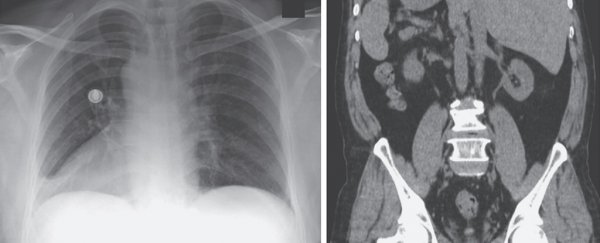For the latest tale of the unexpected from medical emergency rooms, we bring you the case of a 66-year-old man who turned up at the hospital complaining of a cough and chest pains.
Soon enough, doctors realised the patient's internal organs were all on the wrong side of his body: his heart was on the right, liver on the left, and so on.
This condition actually has a name, situs inversus totalis, and it's not as life-changing as you might think at first. In fact, before we had modern medical scanning tools, it's thought most people who had this lived their lives without ever getting diagnosed.
His doctors mention that the patient had recently immigrated to the US after living in a refugee camp for 20 years. Among the strange findings shown up by a chest radiograph were dextrocardia (where the apex of the heart is on the right, not the left) and a "mirror-image transposition" of the abdominal organs.
The man's symptoms included chest pains, congestion, coughing, and pain on the left side of the abdomen, according to the medical report. Thankfully, it turned out to be just an upper respiratory infection; after being treated for pain with anti-inflammatory drugs, the patient recovered a few days later.
Situs inversus is a rare condition, but not unheard of: Donny Osmond is one of the more well-known cases. In fact, situs inversus totalis, where all the abdominal organs and the heart are flipped, is the most common type and affects around 1 in 10,000 people.
Provided the organs are still in the right spots, relatively speaking, major health problems can be avoided even when they're mirrored. People with the condition sometimes wear a bracelet declaring it though, just in case doctors try emergency surgery on the wrong side of the body.
Most complications happen around the heart: in the case of situs inversus and dextrocardia, key arteries can end up lying in parallel rather than criss-crossing, which can make surgery and heart transplants much more difficult.
The condition of situs inversus ("location" and "opposite" in Latin) was first named by Matthew Baillie in 1788 and continues to intrigue doctors and scientists today. It was even used as a plot device in a Bond novel (1958's Dr No, if you're wondering).
There's also the recently publicised case of Rose Marie Bentley from Oregon, who lived to the grand old age of 99. Until her death, no one knew that she had the unusual condition.
Bentley had her heart on the correct side of the body – the left – which actually makes situs inversus much more dangerous and leads to higher mortality rates.
Situs inversus can often be dismissed as an X-ray error when babies are born, which is why people sometimes aren't diagnosed until many years later: 66 years in this particular case.
The case report was published in the New England Journal of Medicine.
